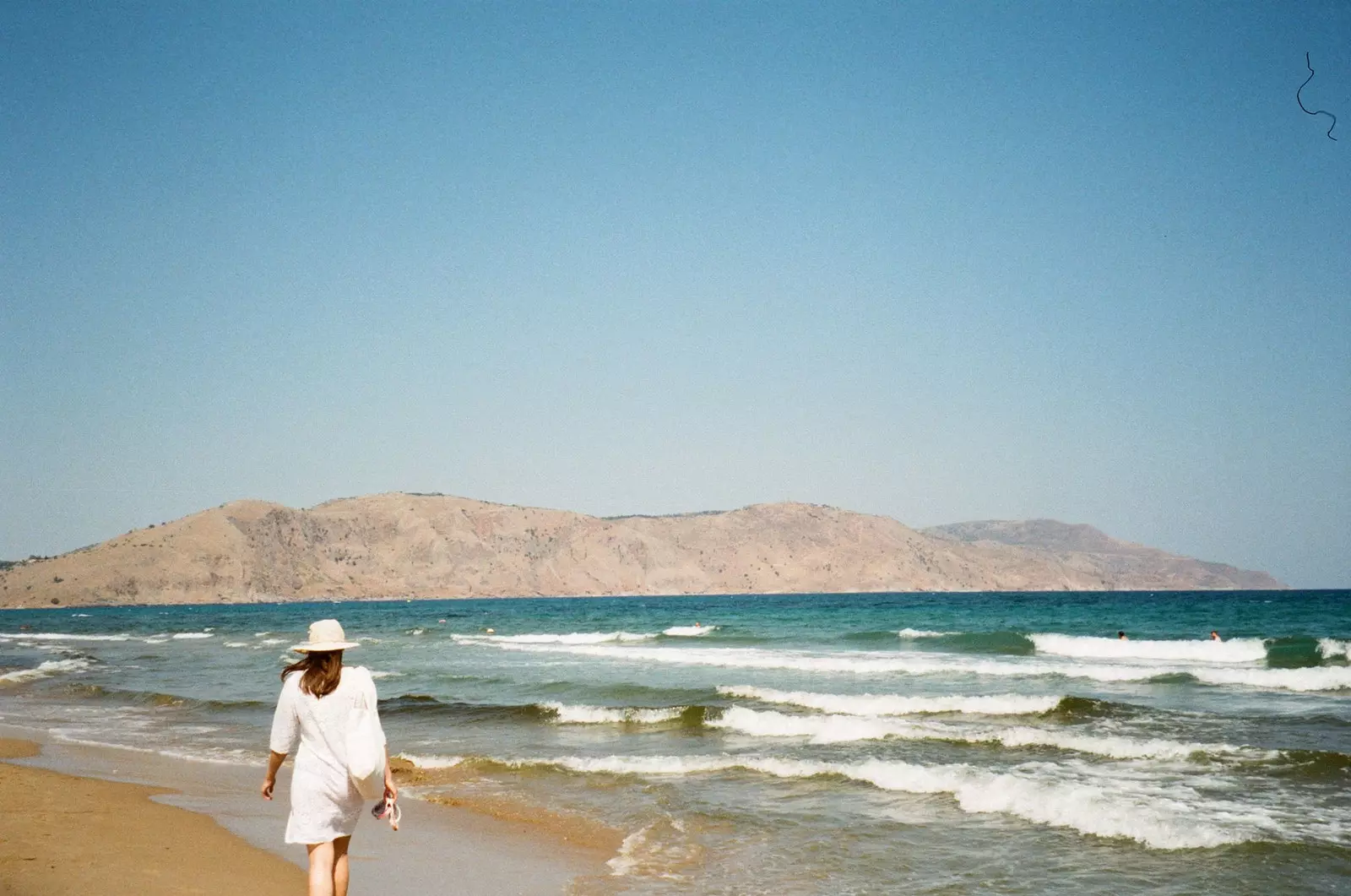
Crete and her agitating women
You have to know how to choose the beginning of the trips. This begins before a woman of marble and bronze, in Greece. “You should not travel where the Romans have not been” , as Carlos Navarro Antolín wrote in a perfect sentence.
we are looking at someone somewhat special (marble and bronze?) and quite popular: Artemisa. We are standing in front of her, with our sandals and our cell phone in hand, in the Archaeological Museum of Chania.
We look at the delicacy of the curve of the body, the folds of the clothes and think of the moment when archaeologist Vanna Niniou-Kindeli discovered it, along with an Apollo, in 2016 in the ancient city of Aptera which is just an hour from where we are.
for a few moments we travel so far into the past with this classic celebrity that we forget to take the photo. Then we go back and click.
Artemisa and Vanna are the first women to accompany us on this journey through Western Crete. There will be more Crete and there will be more energetic women. Nothing can go wrong.
This year is atypical; with fewer visitors, the beaches are quieter, reservations are not necessary at restaurants, and hotels offer better rates.
In addition, as Vanna's daughter tells us and another of the protagonists of this article, whom we will already know: "All small businesses are so eager to work, to see people at their tables and in their shops, to see them happy...".
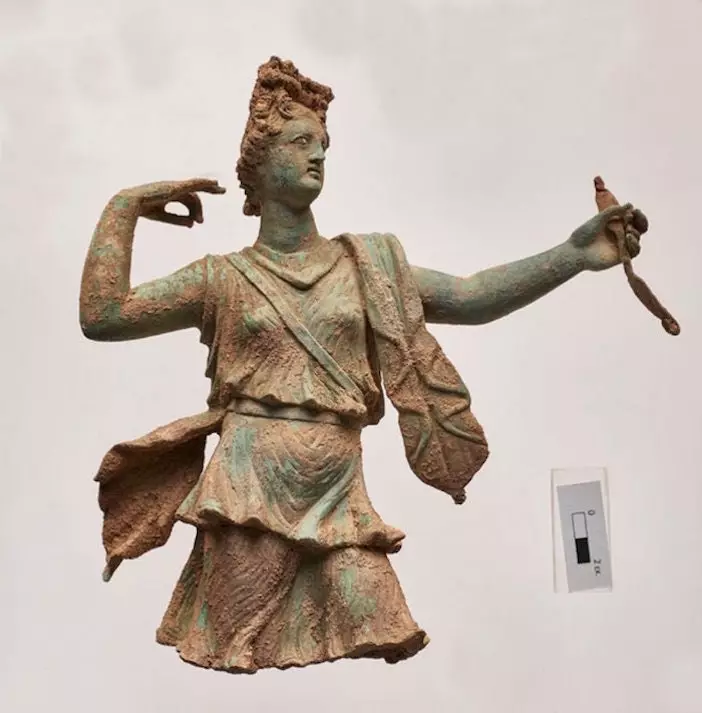
Vana Niniou-Kindeli discovered this statue of Artemis in 2016 in Aptera
Our beginning has not been Greek, because this Artemis is Roman and she ended up here to adorn some patrician's house.
This succession and mixture of cultures is typical of Crete , as the island has been coveted by various civilizations. They are the drawbacks of being located in one of the best places in the world.
This trace can be seen in the face of our Artemis, in Roman palaces, Byzantine churches and Ottoman buildings.
This desire to seize Crete reaches the 20th century; The Germans savagely occupied the island in 1941 and the Cretans, men, women and children, fought to defend it. That fierceness and this attachment to the island is part of the character of this place, which is Crete before Greece.
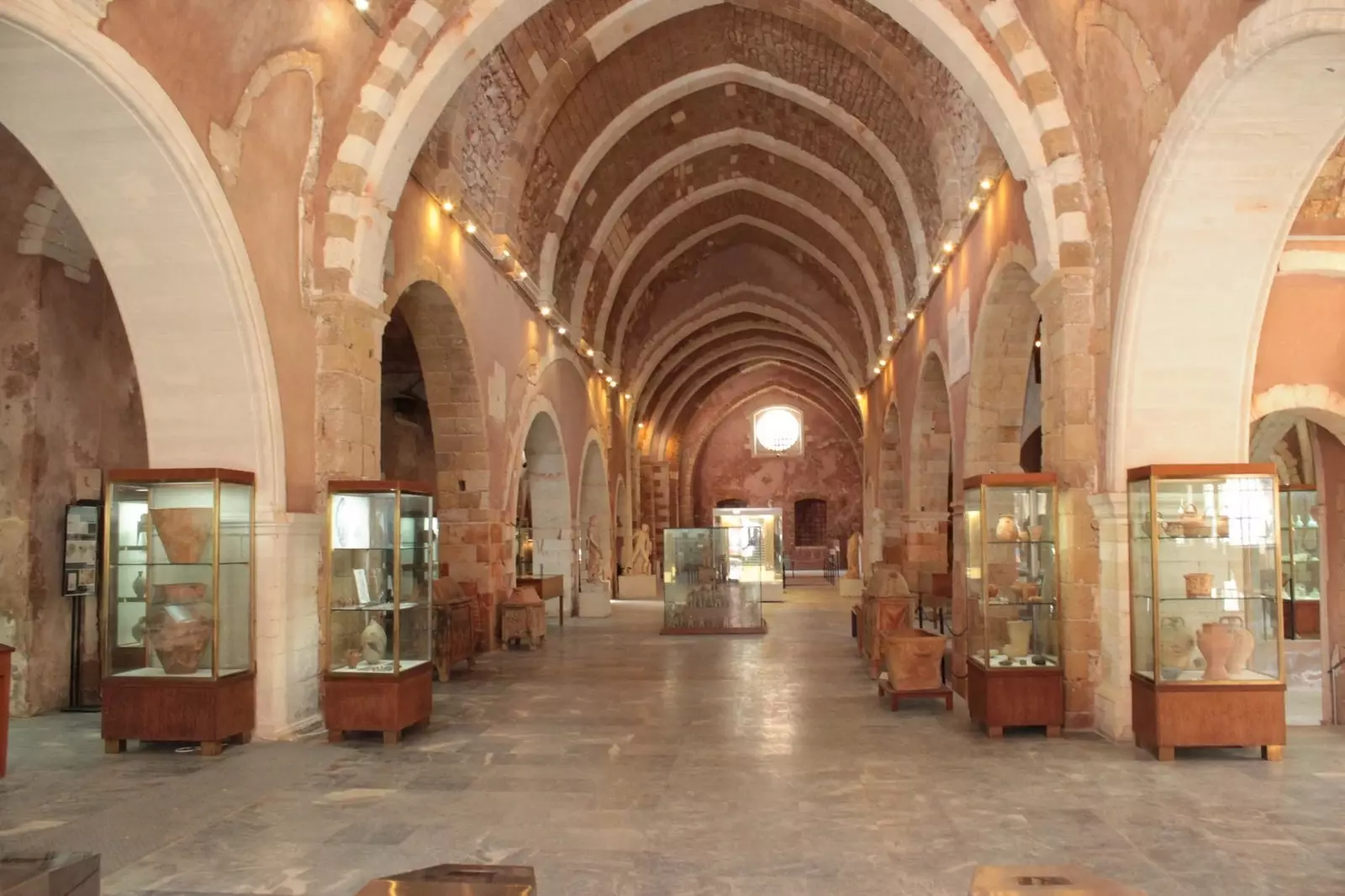
Strolling through the Archaeological Museum of Chania
Vanna lives in one of those Venetian buildings that dot the island. Her house, which was built as a summer residence around 1580 and later bought by a Turkish family, is a hotel.
To call Metohi Kindelis thus is to equate it with others and Metohi Kindelis is different from everyone.
To begin with, it is the home of the Kindelis since 1910 and this makes it a signature hotel. To continue is a working farm with a participatory farming system and as such, there is movement in it.
It is not a resort, it is not a social hotel, it is not a boutique hotel and it does not need to be; don't expect a restaurant, Pringles in the fridge (yes cheese) or a pool bar. There's no need: It exudes charm and culture in every corner.
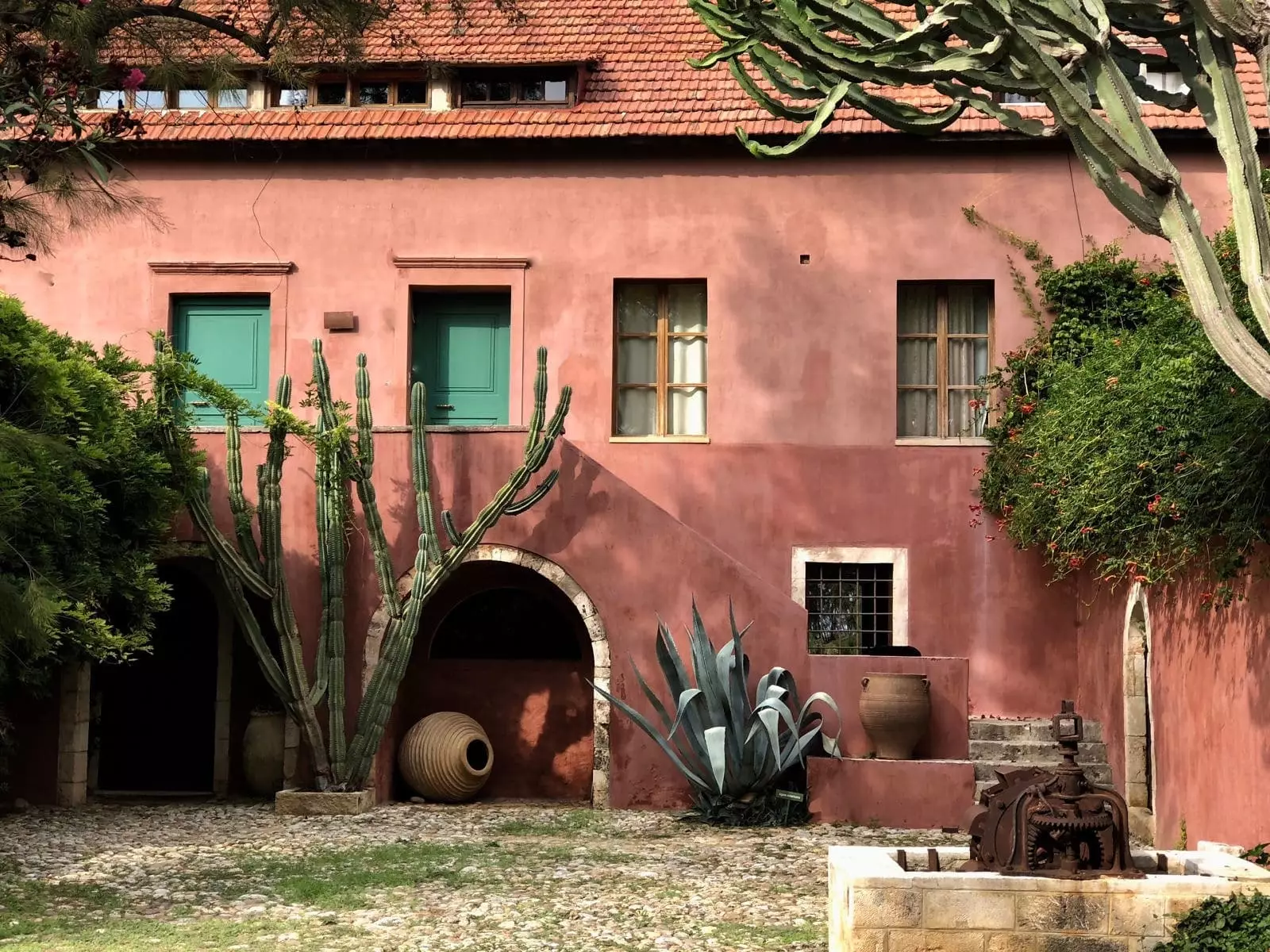
Metohi Kindelis: Vana's home (and hotel) on Crete
It only has three spaces, which we can call villas or studios, called Danae, Kynthia and Kiriakos; each of them with its own pool.
Who chooses to stay here is someone who wants to connect with Crete in a genuine way, that he will enjoy the orderly-messy garden, scandalous dips, measured excursions, interior retreats with books and songs, and long after-dinner conversations like summer naps.
is someone who wants prepare breakfast with figs, milk, fruit, butter, nuts and bread that Danai leaves every day. Who is Dani? She is the third woman on our trip.
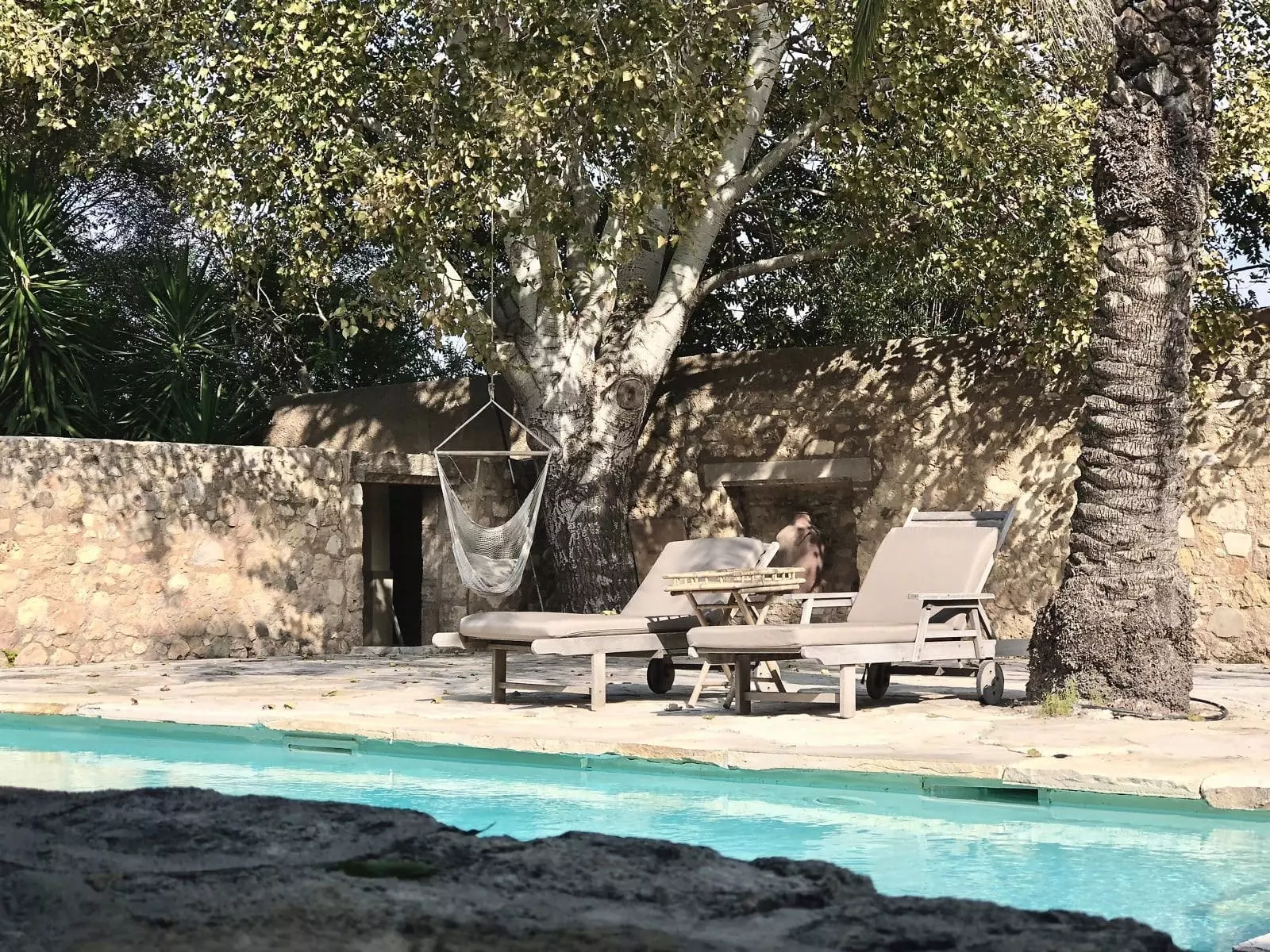
One of the pools at Metohi Kindelis
Danai is the daughter of Vanna and the soul of Metohi Kindelis. It is easy to see her in her kaftan and her loose hair carrying a basket of amaranth and avocado that she has just picked from the orchard.
Her family is a pioneer in organic farming (Manolis, Danai's uncle, had that vision) and in the cultivation of many tropical fruits. Here it is clear: you have to follow Nature, its rhythms, its food. And so it will be done.
She, with her training in International Relations and her previous life in Germany, France and Spain embodies the Cretans who left the island and have returned to it loaded with nostos. Write down that word: she will return.
She is a round trip woman, which adds sophistication to the one she already brings as standard to this land, which she calls cradle of modern civilization; nothing more and nothing less. Almost everything that we like and that we enjoy today (except the cinema and four other things) she was already known in Crete more than two thousand years ago.
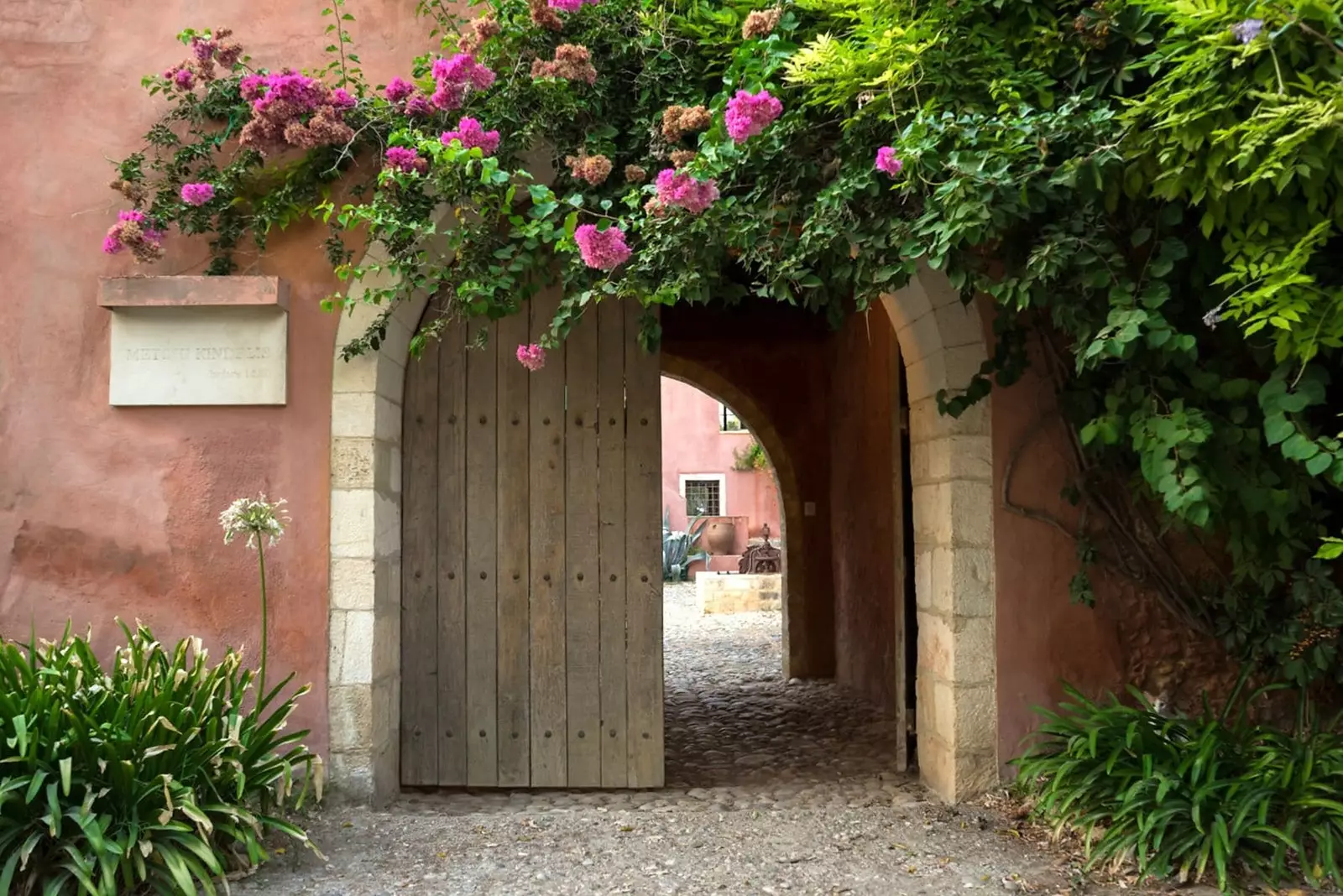
Danae, Kynthia and Kiriakos are the names of the three villages of Metohi Kindelis
Danai greets guests in one of the four languages she speaks and becomes his best guide. No one better than her to tell them, almost in a low voice, where that beach is where the locals go, where to have a delicious breakfast in Chania (pronounced Jañá), where to buy a ceramic bowl, or the ones that fit in our suitcase.
She books restaurants, organizes weddings, attends filming and she even has time to choose the tomatoes that she will place in the refrigerators of the villas.
She says that Metohi is a property that has been for three of the four generations in the hands of women.
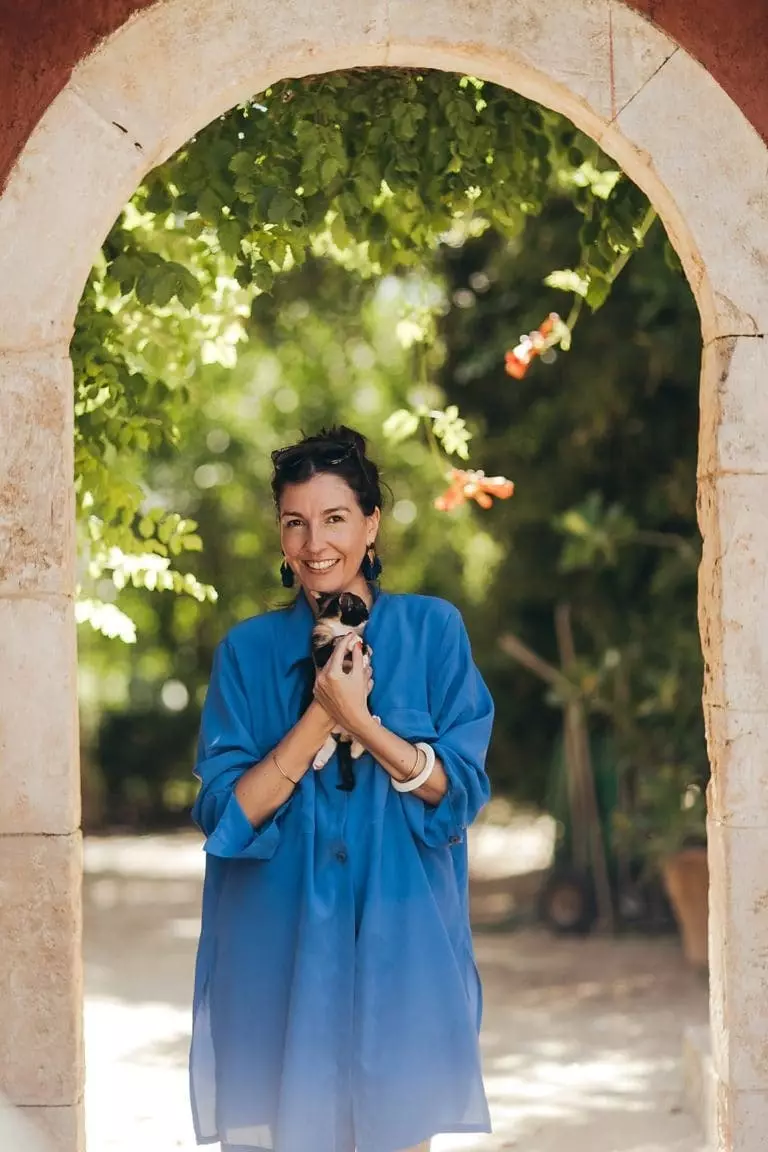
Danai is the daughter of Vana and the soul of Metohi Kindelis
This role of factotum comes from heredity. She recounts: “First it was my great-grandmother Victoria, who bought the property in Istanbul negotiating with the Pasha before moving to Crete. She left her literary career as a writer of plays, then it passed into the hands of my grandmother and now I am”.
This, on an island like Crete and in a country like Greece, was not and is not common. For her Crete is “the constant contrast between sea and mountains, the hard but warm temperament, the smell of thyme passing through the rocks with salt on the skin in summer, the color of the Libyan sea, the smell of citrus fruits and wild flowers in spring and the colors of autumn, especially the almost gray blue of the sea, the thousand ways of eating the 2000 indigenous herbs of the island, bathing in the sea looking at the snow, the small towns where the people are still purer, close to the land”.
We, ordinary observers, can say little more.
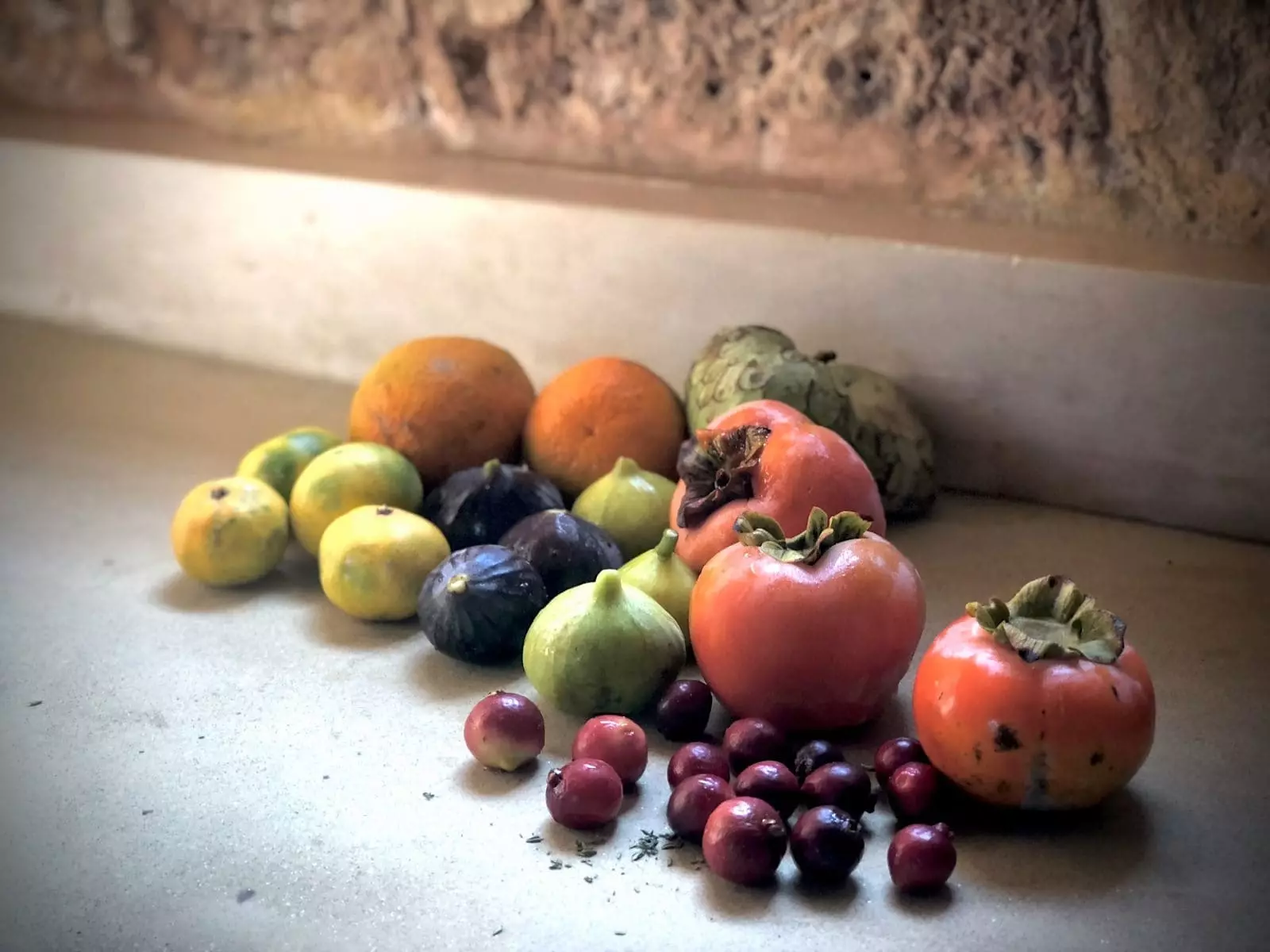
Metohi Kindelis is a working farm with participatory farming system
Metohi Kindelis is on the outskirts of Chania. That is a good hub from where you can visit the island. This time we have decided to stay in the west; Knossos, we're sorry.
From Chania, where this strange hotel is located, We will move in a rental car that will take us to beaches, towns and mountains; there are many and very high in Crete. The beaches are unavoidable: the trio Falasarna, Elafonissi and Balos It is the most sought after and photographed. It is normal: they are scandalous.
However, there are other less photographed very seductive. One is Sweetwater, which faces the Libyan Sea and where fresh and salt water mix. Eating there, in the only restaurant that exists, with the presence of the mountains is what some cheesy people call (we call) luxury.
There is another beach called Ravdoucha which is a mixture of the landscape of the Sierra de Huelva and the Caribbean Sea. there it is possible bathe in crystal clear water and leave the sarong in the shade of an olive tree. And at the end, eat a salad with a lot of feta and a cold beer in a place called Rock on the Wave. This plan is a scandal.
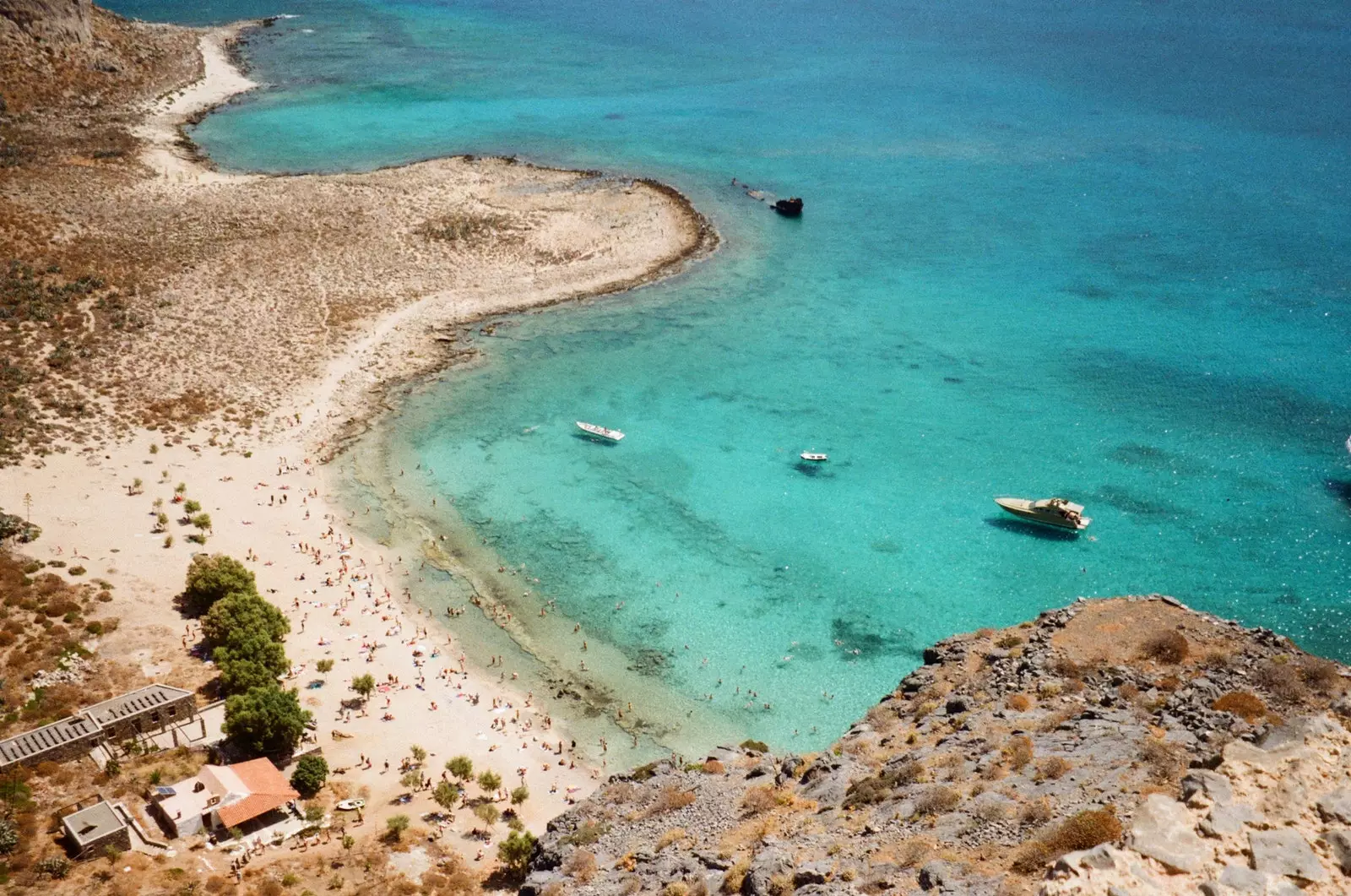
balus beach
Not everything is beaches, luckily. Western Crete is dotted with picturesque towns such as Vamos , to which we will go just to say "Let's go Let's go". This is a curious case: it has been a place resurrected by former neighbors who returned to it after time away.
The nostos, the word returns, promoted its rebirth in the 90s. Today it is a place with small restaurants like Sterna tou Bloumosifi, where you eat grilled fish and salad under the vine , houses in which it is easy to fantasize about leaving everything and staying to live there; you can start by renting a 19th century stone villa with a swimming pool.
Very close to Vamos is Paidochori, a town, almost a village, where you have to look for Manousos Chalkiadakis. East ceramist it is one of the most reputable in Greece. He lives and works in a 1300-year-old house full of charisma and out of style.
He uses ancient techniques to create his pieces and is delighted to display and sell them. He does not have organized visits in an orthodox way, but with a phone call you can go and meet him.
Manousos has a good conversation, he invites you to coffee and tea and asks about Almodóvar. You don't have to go back without, at least, a ceramic pomegranate, which brings good luck.
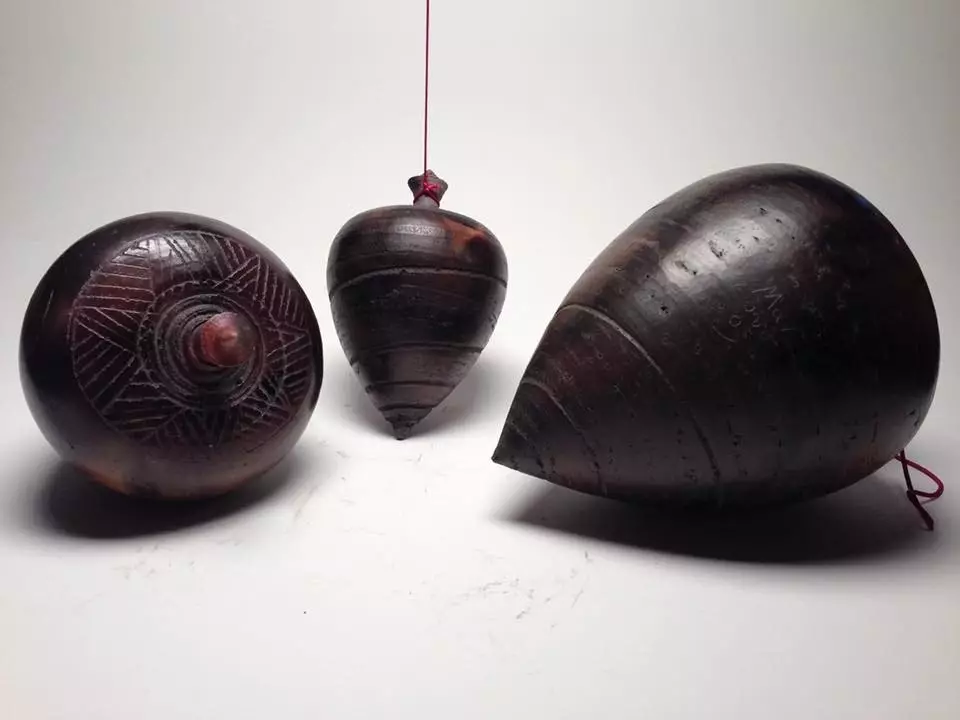
Manousos Chalkiadakis is one of the most renowned potters in Greece
Here the past is very present, that's why everyone will recommend you to do something that has to do with it. Visit the excavation Aptera , yes, where our Artemis comes from, is a good idea; archeology always is.
They call it the little Pompeii and the first deposits are from 1000 BC and go up to 700 AD, when an earthquake destroyed the city; then Arabs, Venetians and Ottomans arrived.
It is another example of the sum of cultures that is Crete. Aptera faces Souda Bay. As on any island, it is impossible to be distracted from the sea, it always ends up appearing out of the corner of the eye.
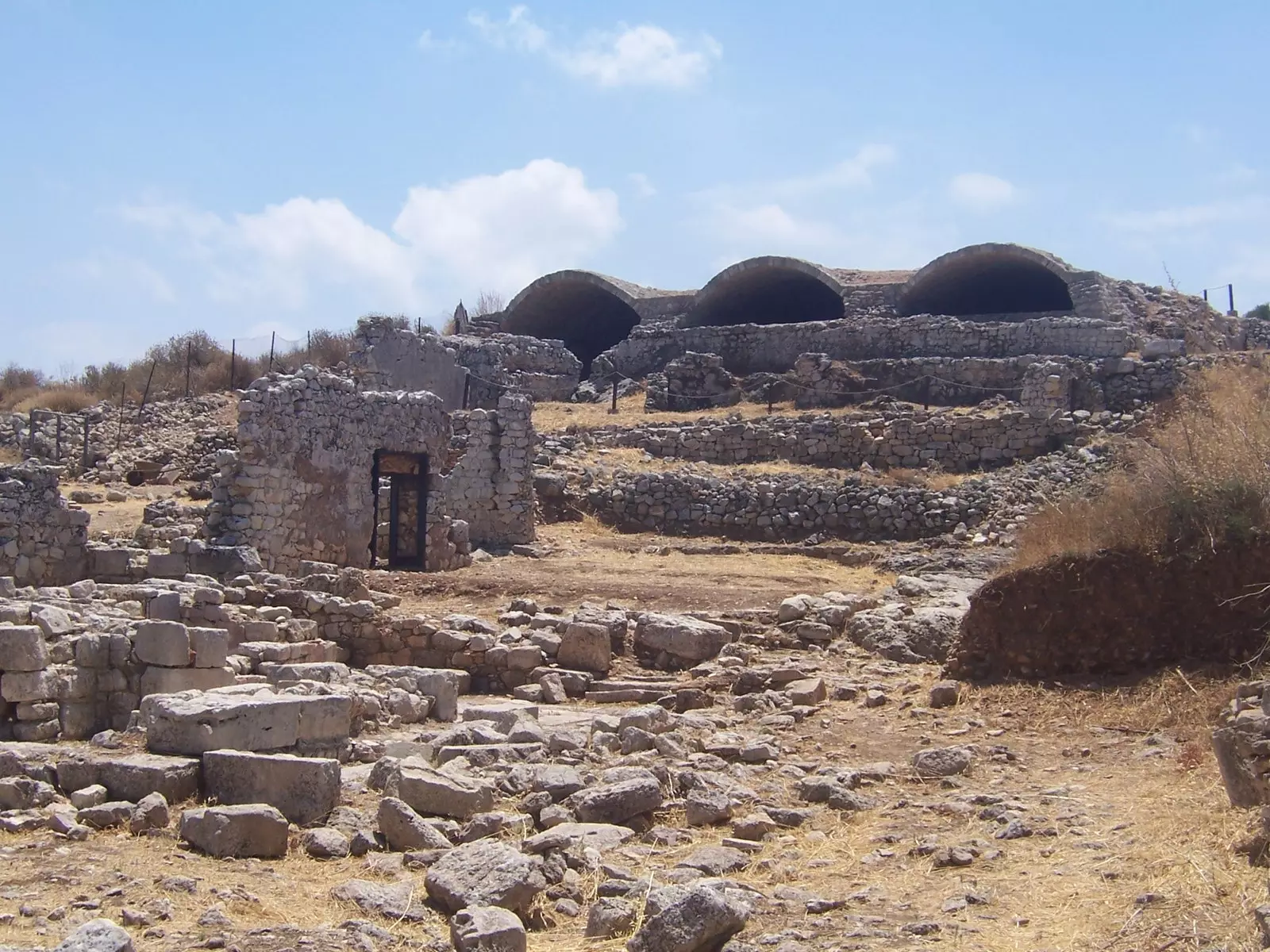
Roman baths and cisterns in Áptera
We keep writing and we still haven't said what nostos means. The best person to tell is Alexandra Manousakis, a Greek-American who is the creator of the Manousakis winery. Her wines bear the name Nostos “because it is the engine of the winery”, she tells us
The nostos would be the feeling of longing for the country, the desire to return to a beloved place, the homesickness of the roots. Nostos is at the root of a word that sounds familiar to us: nostalgia . That is what Alexandra felt after living most of her life in Washington and what she brought her back to the place of origin of her father, Ted, an entrepreneur who made a career in the United States and in 1993 founded the winery.
Alexandra had finished her studies at NYU and left her real estate job in New York in 2007 to literally put her hands in the dirt. She was 23 years old and took over the project. It was not easy to do it being a young woman and a newcomer.
She today she is a businesswoman who has shaken the island scene with a thriving winery where you can taste and dine , a gourmet store of her own products and even a design brand with her name. She belongs, like Danai, to that generation of young women who want to be part of today and tomorrow on her island.
Tasting under an olive tree and dining on something very Greek and very healthy at the Manousakis winery It is not something that is easily forgotten.
Alexandra takes us to another person, another restless person: her husband Afshin Molavi. This Swedish-Iranian businessman is behind Salis, which may be the most interesting restaurant in Chania and, dare we, of the island.
Even the most gourmets will recognize that in Salis, which feeds on local produce to the extreme, there is unusual dishes and flavors.
The taramosalata with botarga, the octopus carpaccio with lime and ginger are outrageous; in Salis many culinary cultures are mixed and for this reason, eating there is also traveling.
Also the wine list This restaurant has personality; even Wine Spectator gave it the Best Of seal in 2019. In addition to the Nostos there are wines from all over the Greek territory, so it is convenient to go with an open palate and go hopping from island to island with cup in hand. You also travel drinking.
So far we have paid little attention to chania , but we are already in it and we do not plan to move in a while. Salis is in the Venetian port, the best known place of what was the capital of Crete.
Chania is a lively, rich and very lively city and it is possible to be in it for several days without exhausting it. Strolling through the port day and night is unavoidable, and it also allows us to connect with the Venetian past of the island.
But there is much more. An interesting visit is the Central Market, where the Greeks stock up: It is the place to buy souvenirs.
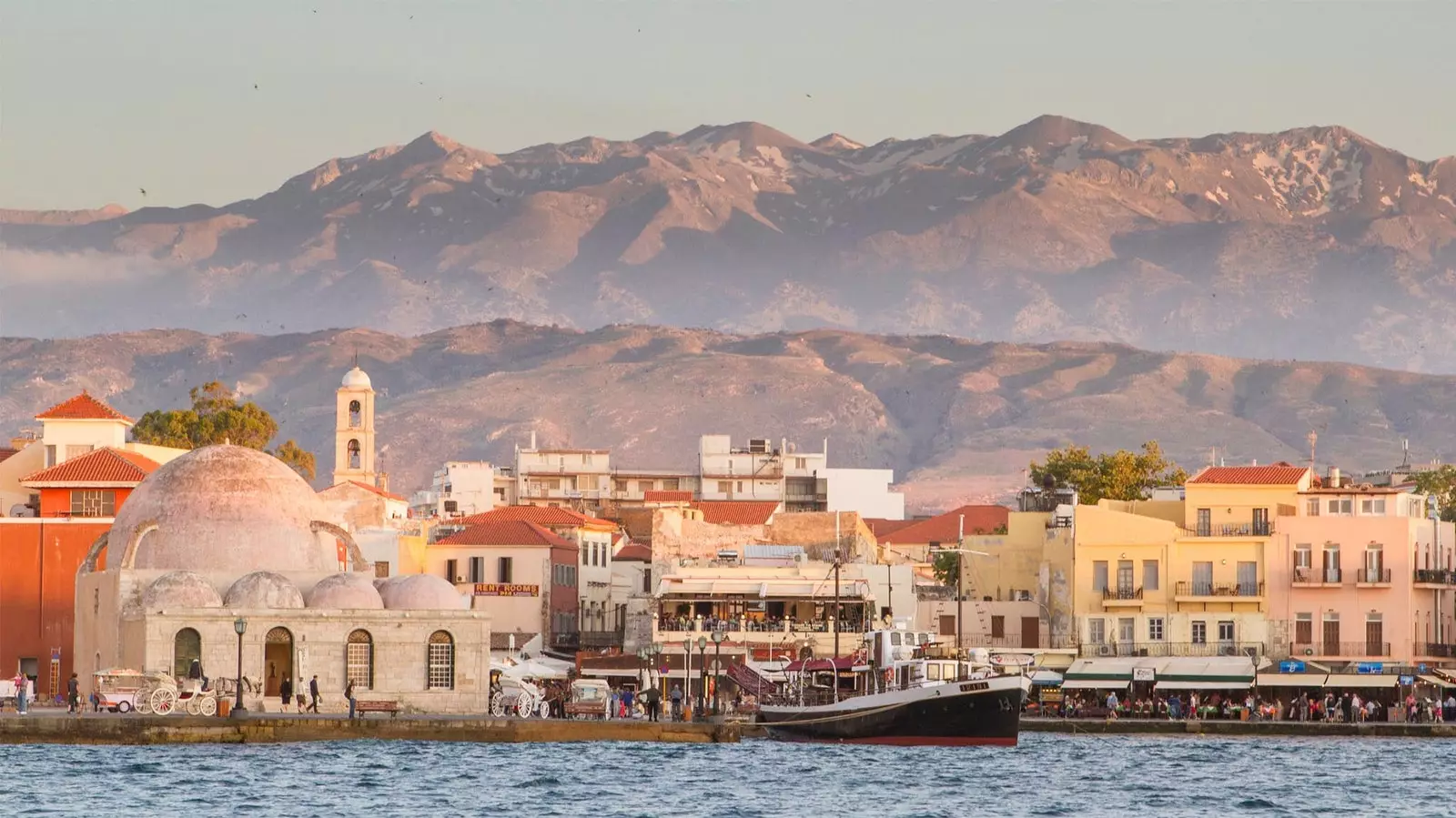
The picturesque port of Chania
very close is the neighborhood of Splantzia, where in the same neighborhood there are very traditional businesses and recently opened cafes and shops. In its squares the elderly sit down to chat on the benches and the youngest on the terraces and the result could not be more Mediterranean.
On the pedestrian streets of Daliani or Potie the locals go out for dinner; Let's mingle with them. All of Chania is full of squares where you feel like staying to live, or at least to dine under a bougainvillea.
There is another neighborhood Chalepa, more frequented by locals than by travelers, which is interesting. In this zone of neoclassical air is the house where Venizelos, one of the fathers of the country, was born. A walk along the avenue with his name, next to the sea, allows us to understand another, more recent (and very majestic) part of the island's past.
In Chania we will want to buy something to remember and we can do it in Flakatoras, a family ceramics business in the center of Chania where we will want to take everything.
In Crete you always have the feeling that what you do is memorable, a feeling that is repeated in Greece. Everything here has a special touch, the sum of many centuries of history mixed with a refined lifestyle and essence.
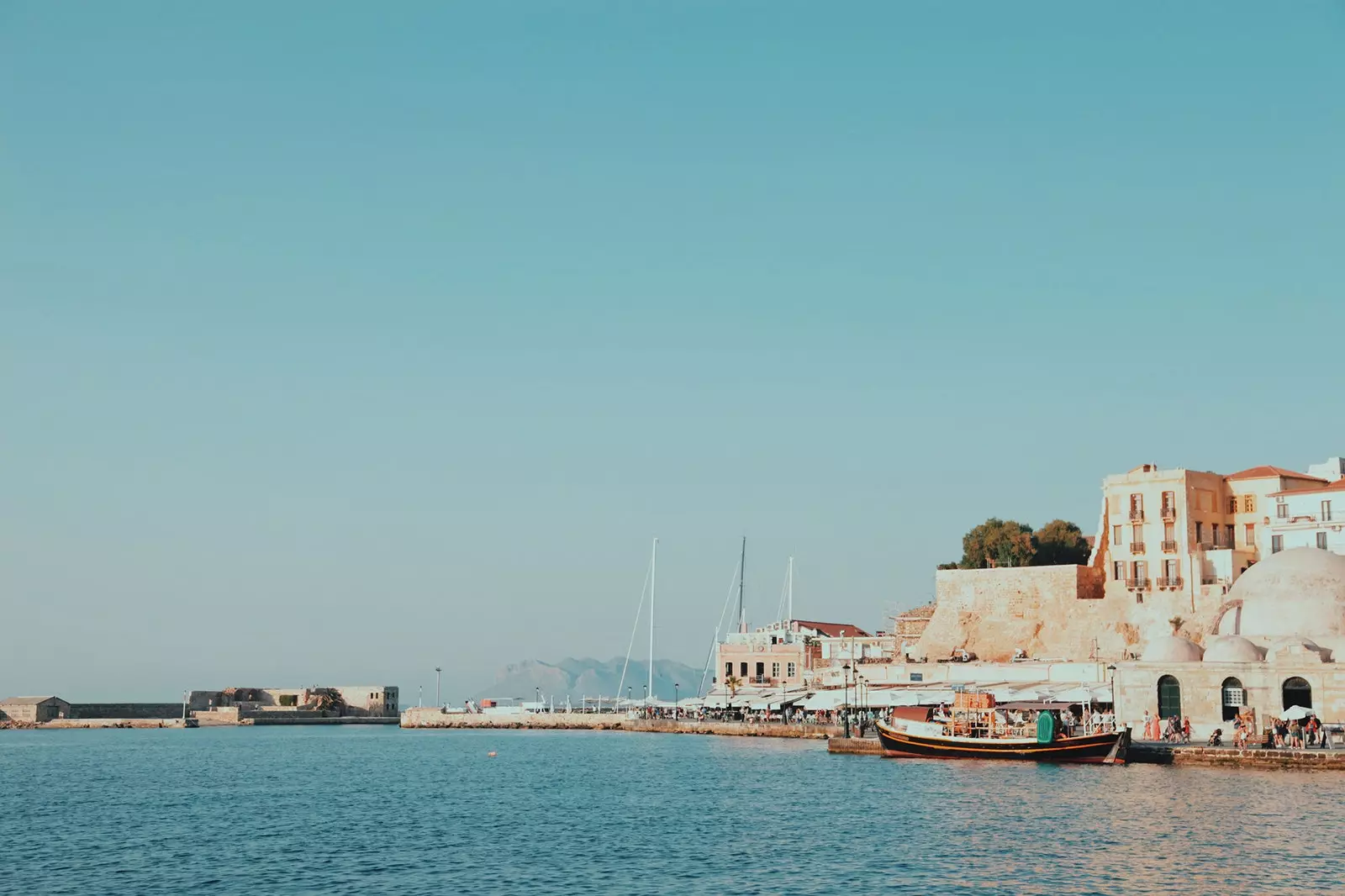
Chania is a lively, rich and very lively city
We have made this trip accompanied by powerful women: Artemis, Vanna, Danai and Alexandra and we've let in some special guests like Manoussos and Afshin.
We start with Artemis and we will end with her. We will return to the Archaeological Museum, a place with scandalous contents and an austere museography. It is one of those museums that, in its simplicity, provokes a certain tenderness; pity that in this case it is the result of a lack of funds.
This museum is in the Saint Francis Monastery , in a Venetian building, and everything in it is important, first class. In the United States they would set up a museum around just one of the pieces that are kept in it.
The Cretans have so much wealth to spare that in the garden the Corinthian capitals are used as benches to sit on.
Once there we will go back to stand in front of Artemis, with the mobile well kept in her pocket. We will look at her calmly and we will thank her, some pagan and epic thanks. Trips have to know how to finish them.
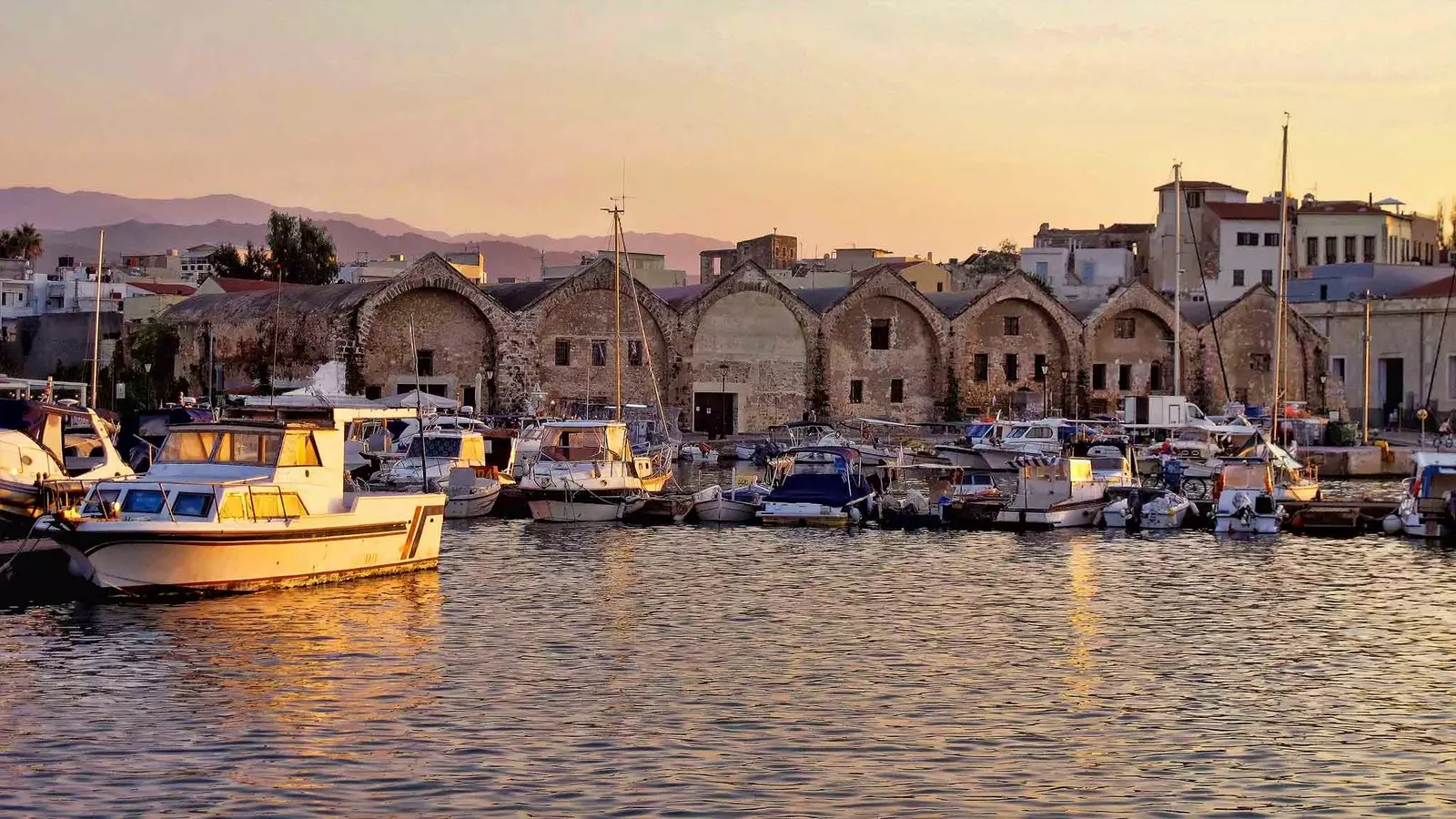
The old shipyards
